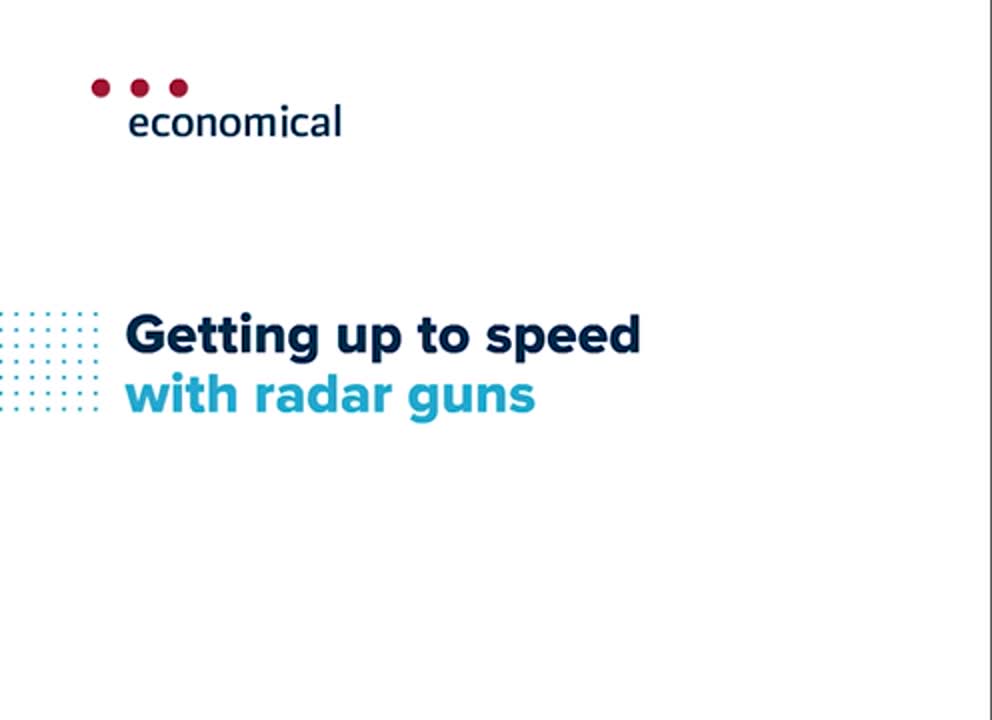Getting up to speed with radar guns
Written by Stephanie Fereiro | Published on: October 3, 2017 | Categories: Car insurance
Have you ever been pulled over for speeding? Did you find yourself wondering how the officer knew you were going exactly 24 km/h over the speed limit?
Although there are a few different ways police can determine how fast someone is driving, radar guns are one of the most commonly used tools at their disposal. Learn how radar works and how it comes into play when tracking the speed of a moving vehicle.
How does radar work?
Radar is used for everything from opening the automatic door at the grocery store to warning a pilot about obstacles in her flight path. But how does radar work? To put it simply, radar (short for “radio detection and ranging”) is based on the science of measuring how long it takes radio waves to hit an object and reflect back to the device they were transmitted from. The amount of time it takes for the waves to return to the device’s receiver indicates how far away the object is.
What about radar speed guns?
It’s safe to say that one of the most widely known uses of radar is in the radar guns police officers use to catch speeders. While calculating the distance between two stationary objects can be based on the length of time it takes for the radio waves to travel back to the receiver, the science behind determining the speed of a moving object (like a car, for example) goes a little further.
Let’s break down the basic steps a radar gun takes to detect your speed:

- The radar gun transmits radio waves towards your moving car.
- The waves hit your car and reflect back to the radar gun’s built-in receiver.
- Since your car is moving, the waves are reflected back at different points in space, so the frequency of the wave pattern changes.
- A computer chip inside the radar gun calculates how much the frequency of the radio waves changed as they bounced off your car, which determines your vehicle’s speed.
- A screen on the radar gun displays your speed.
As technology advances, so do the systems used to keep roads safe. More modern speed detectors like lidar or laser guns (which use light instead of radio waves), are gradually replacing radar guns in many areas. Lidar guns have a narrower beam and are able to target individual vehicles more precisely than radar guns, reducing the chances of accidentally picking up the speed of another object nearby, like an airplane or the leaves on a tree. Some lidar guns also take a photo showing your vehicle and your speed, which makes it easier for police to issue a ticket.
Five ways to avoid speeding and keep your record clean
Consider taking these five simple steps to avoid speeding and keep your record free of speeding tickets:
- Use an app that warns you when you’re going too fast, like Waze.
- Set your vehicle’s cruise control when travelling long distances.
- Avoid travelling in the left-hand lane unless you’re passing another vehicle.
- If you tend to sit very close to the steering wheel, move your seat back a little to help take some weight off your foot.
- Always leave yourself extra time to get to your destination — if you feel rushed, you’re more likely to drive over the speed limit.
It may come as no surprise that a speeding ticket can impact your car insurance premium. If you’ve been caught speeding one too many times, you could even find yourself searching for “high-risk” insurance in the not so distant future. Reach out to your group’s insurance broker to learn more about your car insurance options.
Share these tips on Facebook or Twitter to help your friends avoid speeding and keep their driving records clean.